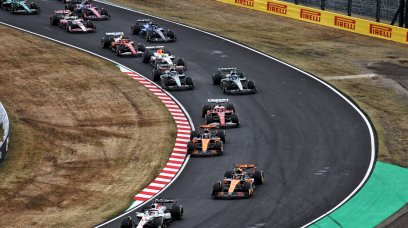Ferrari team principal Frederic Vasseur has said General Motors (GM) entering F1 as a power unit supplier will be a good thing, but highlighted the precarious nature of maintaining healthy numbers of OEMs.
When F1 embarks on a new regulations cycle at the start of the 2026 season, it will have five engine suppliers, or original equipment manufacturers (OEMs).
However, that would have been six had Alpine not decided to forgo its works team status in order to become a Mercedes customer.
The Frenchman was keen to point out this development when discussing Cadillac F1 joining the grid at the start of the next rules era, with GM expected to produce its own power units from 2028 onwards.
At that point, the number of OEMs will be bolstered to six, with GM joining Mercedes, Ferrari, Honda, Red Bull PowerTrains and Audi - the lattermost pair being new themselves in 2026.
Ferrari will supply Cadillac for its first two seasons, along with F1's other American squad, Haas. But the Scuderia's team boss knows how quickly plans can change.
Vasseur touched upon the cyclical nature of F1 to underscore his point, which is to exercise cautious optimism when assessing what the latest planned OEM growth means for the championship.
"It's a new engine manufacturer for the future, and this is good," the 56-year-old told media including RacingNews365.
"[But] we all have to keep in mind what's happened in the past - F1 is a cycle.
"A couple of times in my life, F1 was flying, like 2006/07. Or [there are times like] 2017/18, [when] at one stage we were only sure to have two manufacturers for engines.
"It means that if they are able to come with an engine, It's good for F1, [but] you never know about the future - you saw what happened to Alpine."
Also interesting:
Join RacingNews365's Ian Parkes, Sam Coop and Nick Golding in the first podcast episode of 2025! Lewis Hamilton becoming a Ferrari driver is a key talking point, as is the beginning of Red Bull's new era following the exit of Sergio Perez.
Rather watch the podcast? Then click here!
Don't miss out on any of the Formula 1 action thanks to this handy 2026 F1 calendar that can be easily loaded into your smartphone or PC.
Download the calenderMost read
In this article












Join the conversation!